6 Mistakes You're Making When Reheating Leftovers

I was late to the "leftovers for lunch" game. Until recently, I'd saunter into my kitchen around 2 p.m., fumble through the fridge, and emerge with some sorry mix of crudité and hummus. Within an hour, my tummy would be grumbling again.
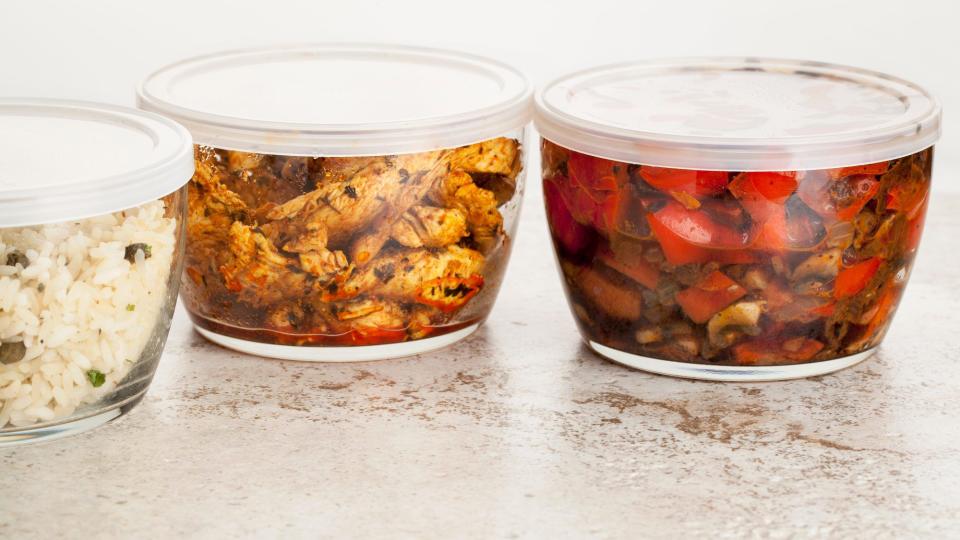
Getty Images
Then I realized that if I made extra dinner the night before, I'd have an already-made meal ready to scarf down the next day when lunchtime rolls around. But here's the thing: There's an art to reheating leftovers. And by art, I mean a way to do it that can kill the potentially harmful bacteria that resides in already-cooked food. Here are the six major mistakes you might be making in the leftovers department, plus one myth we needed to debunk. Learn them, live them, love them. Because really, who has time for food poisoning?
RELATED: How Long You Can Store (Almost) Anything in the Fridge and Freezer

Getty Images
You let food sit out at room temperature for longer than two hours.
Don't allow any perishable foods, including cooked foods or leftovers, to sit out at room temperature for more than two hours. After cooking, serve your dish while it's still 140 F or warmer. According to the United States Department of Agriculture's Food Safety and Inspection Service, the "danger zone" is between 40 F and 140 F. That's the temperature at which harmful bacteria that cause foodborne illness can grow.
Has the food been out for more than two hours? Throw it away—and do so after just one hour if the temperature is over 90 F, such as at an outdoor picnic during summer, according to the USDA's website.
Refrigerate leftovers as quickly as you can—and try to bring their temperature down as fast as possible. Use shallow containers and cut larger foods into smaller pieces for quicker cooling. Divide large batches of soup or stew into smaller containers, too. Whole roasts, turkeys, or hams should also be cut into smaller parts before placing them in the fridge. To accelerate cooling, place airtight containers in an ice or cold-water bath before you refrigerate.
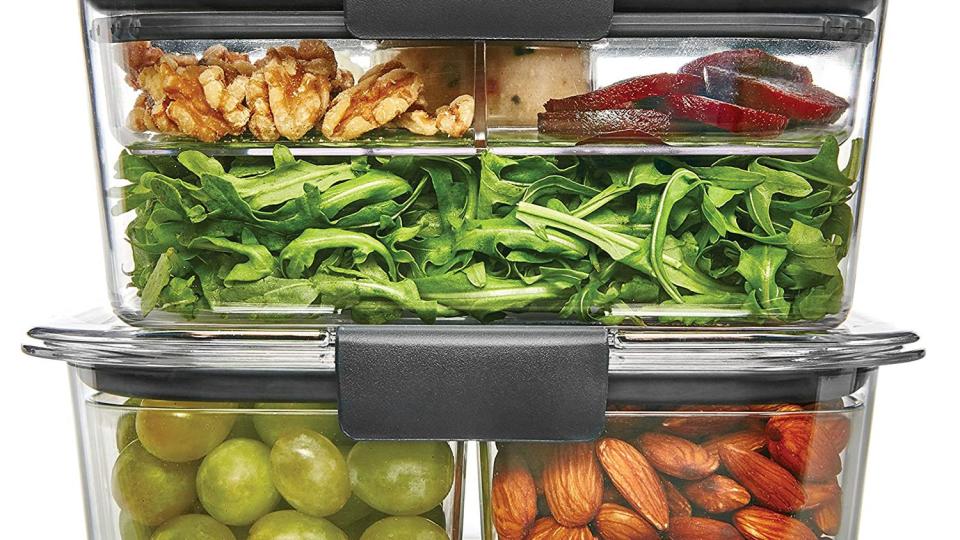
amazon.com
You don't store them in airtight containers.
Choose high-quality, airtight food storage containers over wraps, takeout containers, and other flimsy or mismatched plastic pieces. Match the quantity of your leftovers to the size of the container—filling it as much as possible to eliminate extra air space. This helps to keep bacteria out, preserves moisture, and avoids other odors from latching onto the food.
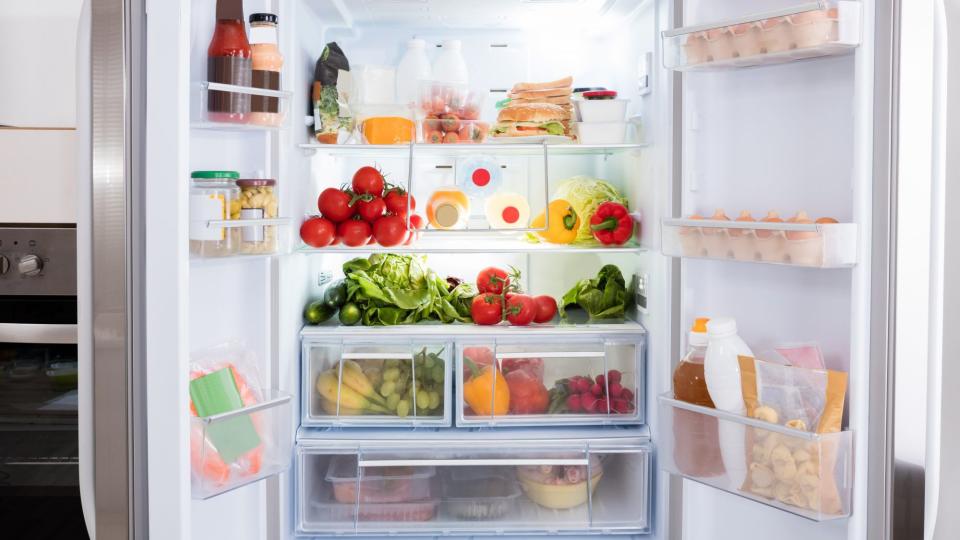
Getty Images
You store leftovers in a fridge that's too warm.
Set your fridge temperature to 40 F or below, and double-check it with a refrigerator thermometer. According to an Eatright.org survey, more than a third of people typically keep their refrigerator set at 40 F or higher, and 41 percent admit they don't know the proper temperature to which their refrigerator should be set. Think of all the lost leftovers—and the bacterial growth—this could have caused.
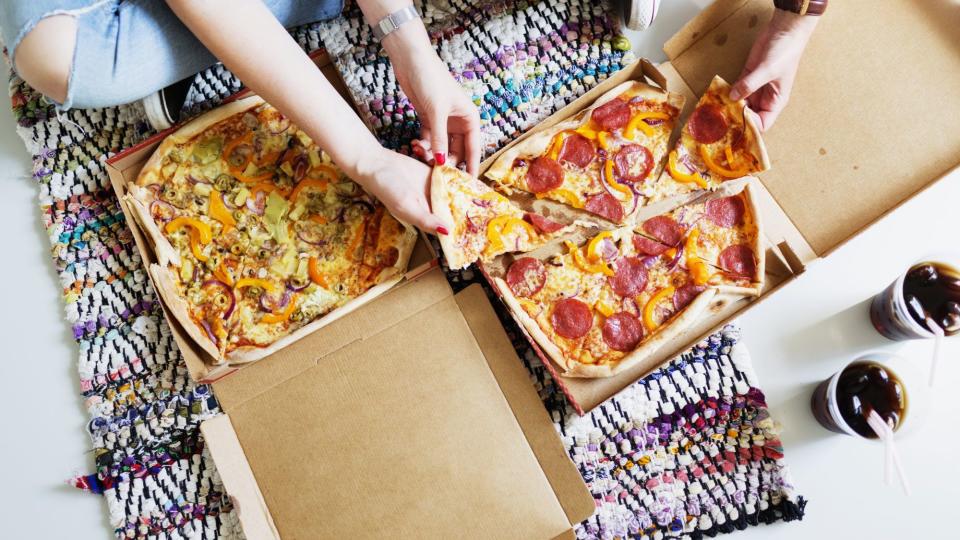
Astrakan Images/Getty Images
You keep leftovers longer than three to five days.
The USDA recommends using refrigerated leftovers within three to five days or freezing them for up to four months. Your nose knows best, so be sure to discard any foods with off odors, colors, or textural changes. To simplify things, always label leftovers to keep track of when they were made, and keep your fridge well organized so you can see what you have on hand. And when in doubt, throw it out.

Getty Images
You don't reheat them to a high enough temperature.
"When reheating leftovers, be sure they reach 165 F as measured with a food thermometer," recommends the USDA. "Reheat sauces, soups, and gravies by bringing them to a rolling boil. Cover leftovers to reheat. This retains moisture and ensures that food will heat all the way through." Remember: A food thermometer is the only reliable way to ensure you've reached a high enough temperature to eliminate harmful bacteria. Pay particular attention when reheating foods that are likely to cause foodborne illness, such as chicken, eggs, and pork.
When using the microwave to reheat leftovers, make sure the food is evenly heated throughout. If your microwave doesn't have a turntable, take extra measures like this: Midway through the heating time, rotate your dish halfway before stirring or tossing it to eliminate any cold spots where bacteria can thrive. Next, let your food stand for one minute before inserting a food thermometer to ensure that it's reached the proper internal temperature of 165 F. The USDA also recommends covering your dish with a microwave-safe lid when reheating. "The moist heat that is created will help destroy harmful bacteria and will ensure uniform cooking."
RELATED: 10 Things You Should Never Put in the Microwave
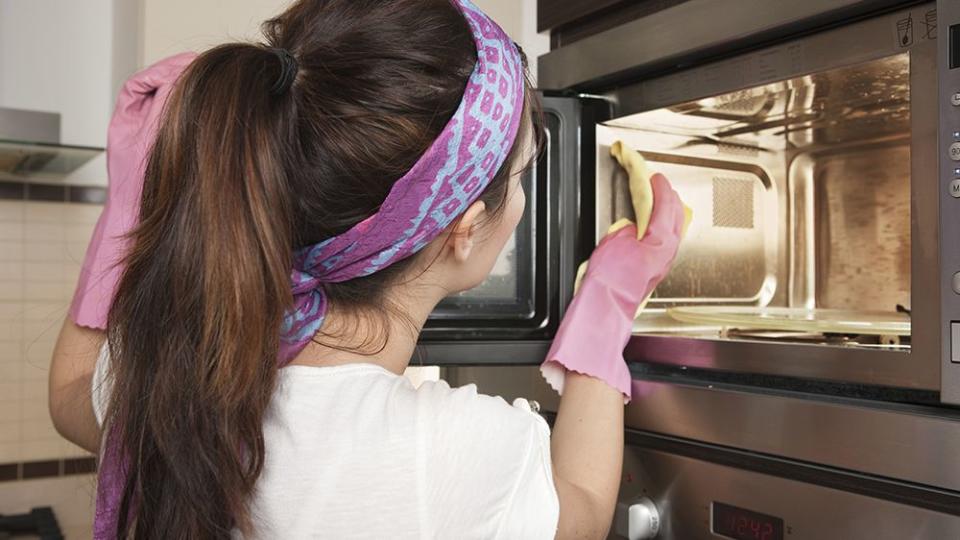
Oktay Ortakcioglu/Getty Images
You cross-contaminate inside your microwave.
Many people still use their microwaves to defrost frozen meat. This is a whole separate issue, but suffice it to say, we don't recommend it. Juices from raw meat often carry harmful bacteria, so if you do use the microwave to thaw meat, seafood, or poultry, take precautions to avoid cross-contamination. For instance, use separate microwave plates—keeping one for defrosting meat and another for heating foods you'll eat immediately after—or wash your plate in hot, soapy water between uses.
RELATED: Follow These Tips to Quickly and Safely Defrost Frozen Seafood
Now that we've covered the most common mistakes when storing and reheating leftovers, let's address a falsehood we've seen time and again on the internet. There's one leftover food that we supposedly shouldn't be eating: potatoes.

You believe the myth that reheating cooked potatoes can produce botulism.
By no means do we want to downplay the severity of botulism, so here's a little background: "Botulism is a rare, yet serious illness caused by a Clostridium botulinum (C. botulinum)," explains Tamika Sims, PhD, senior director of food technology communications at the International Food Information Council. "C. botulinum can be found on the surface of fruits, vegetables, and seafood, so it's extremely important to practice safe food handling during food preparation, especially when home canning. Keep seafood away from ready-to-eat foods and wash fruits and veggies with cool running water." (See our guide for the proper way to wash produce).
At warmer temperatures, potatoes are particularly prone to growing Clostridium botulinum. "But heating or reheating potatoes via a microwave or any other device cannot cause botulism," Sims affirms.
When preparing and storing potatoes, follow Sims' advice and properly wash them, avoiding cross-contamination, and stash cooked spuds in the fridge as soon as you pull them from the oven or boiling water. For foil-wrapped potatoes, the CDC adds that the safest method is "keeping potatoes that have been baked while wrapped in aluminum foil hot (at temperatures above 140 F) until they are served, or refrigerating them with the foil loosened."


